The Washington Coliseum
So on January 17, 2013 my wife, son and I headed off to Washington, DC for a six-day vacation that would include the Presidential Innauguration on the 21st. We stayed in a ritzy hotel in Crystal City, which is in Alexandria, VA just south of The Pentagon and west of the Ronald Reagan International Airport.
Crystal City includes a small mall called the Crystal City Shops with restaurants and gift shops. It's underground and adjacent to a D.C. Metro station. It's one of the coolest places in the world. We were able to go from our hotel room, down to the lobby, then down a long tunnel to the "Shops" then from there, down an escalator to the train station. All underground. You can find out all you'd ever want to know about Crystal City
here.
As for the Washington Coliseum? Well, on the morning of Friday, January 18, off we went. This trip had three purposes. First, to find and visit the old Washington Coliseum. Then, to Union Station where we were to pick up our Innaugural Parade tickets from a vendor whose office was there. Finally, we made a pilgrimage to another famous D.C. landmark,
Ben's Chili Bowl (perhaps we'll someday tell THAT story here, as well).
But back to The Coliseum. Not knowing much about this section of town other than information available using the Google Maps thingy, we weren't really sure what sort of a neighborhood we were going to be visiting so we intentionally dressed like a couple of homeless people. It was about 20 degrees outside so we both put on long underwear and old jeans. I took all the credit cards out of my wallet in case we were mugged. I stuffed about $50 and one credit card down in one of my socks. Then we put on sweatshirts and jackets and OFF WE WENT.
Below are some of the photos with comments about each one...
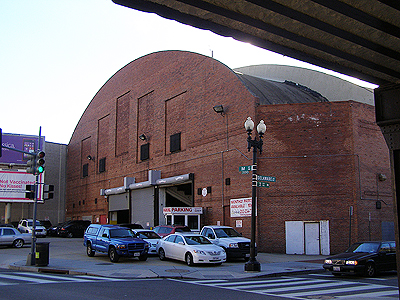
The erstwhile Coliseum is located at the corner of Delaware and M Streets in NE D.C. in an area called "NoMa" which means "North of Massachusetts Avenue" (which is a few blocks south of here). It is about four blocks west of Gallaudet University. Gallaudet is famous for being a university that caters to people who are deaf or hearing impaired. They have a pretty good football team that is immediately recognizable because there's a guy on the sidelines with a great big bass drum. This is because most of the players can't hear, so the quarterback can't call out the signals. However, they can feel the vibration of somebody whamming the bass drum so that's how they initiate their plays.
To get to this area, one must take the Red Line Metro to the "NoMa / Gallaudet" station, which is one stop north of Union Station and about one mile northeast of the U.S. Capitol. Upon getting off of the train, you walk south down the platform, down a set of stairs, out through the turnstile and you're now standing on M Street just down the hill from Delaware. You then walk about thirty yards under the railroad bridge and there's the Coliseum.
The above photo was taken as we were walking out from under the railroad bridge and shows the north end of the building.
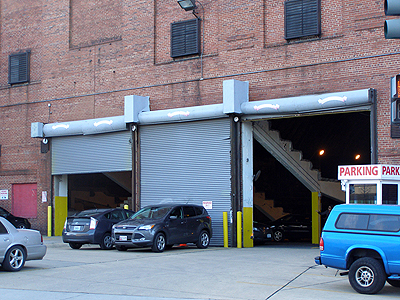
The Washington Coliseum was built by Miguel "Uncle Mike" Uline as a venue for his hockey team, the Washington Lions, who alternated between play in the American Hockey League and the Eastern Hockey League from 1940 through 1957.
To see the stats of the Washington Lions go here and type their name in the "Team Name" box and click "Find Teams." You can see stats for each year and an "All-Time" player roster.
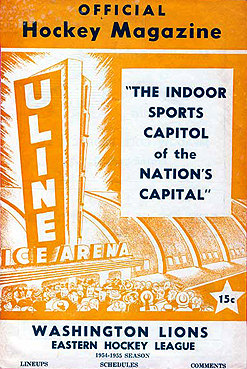
Back then it was called the Uline Arena and it opened in 1941. It was home to the American Basketball Association's Washington Capitols who were coached by the legendary Red Auerbach. In 1959 it was sold to a local jewelry wholesaler and renamed "Washington Coliseum."
Many famous events took place in this building over the years. In addition to the Beatles concert, the building once hosted a speech by Elijah Muhammad, a performance by skater Sonja Henie, and a concert by Bob Dylan.
The Dylan concert is best known for the photograph taken there which later appeared as the cover photo for the album "Bob Dylan's Greatest Hits." Following a riot during a Temptations concert in 1967, the building banned concerts. It became obscure after the opening of the Capital Centre in Landover, Maryland (first home of the NHL Washington Capitals) in 1973.

The building eventually was bought by Waste Management—the company that handles garbage disposal for D.C.—and was used as a garbage transfer station during the 1990s. Waste Management wanted to tear it down, but (thankfully) the D.C. Preservation League listed it as a "Most Endangered Place" in 2003 and this led to it being listed on the National Register of Historic Places in 2007. Today it is used as an indoor parking garage. But, as you can see, many vestiges from the original building still remain, such as those supports for the old stands that you see in this picture.
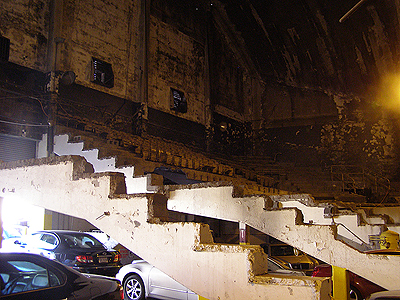
|
An Inside Look at the North End...
|
For obvious reasons, Bryan and I wanted to go inside of this place. But first we had to have permission to do so. Getting it required us to put on one of our better "charm and bullshit" acts for the two Hispanic guys who were working in the parking booth outside of the entrance. One of them spoke English. The other one didn't. We approached them both. I showed them my camera. We told them "This is a famous old building. Can we go inside and take pictures?"
The English-speaking guy said "I don't know. I will ask about this" then he went over to the other guy and they conversed in Spanish for about two minutes. I don't speak Spanish and have no idea what they were talking about but it was probably something along the lines of "Hey, those two American gringo dumbasses want to go inside of this dump. Should we let them or should we bilk a few dollars out of them first?" Regardless, after talking, the first guy walked back over and said "Yes, do not bother the cars but otherwise, yes you can." So, in we went!
And I was amazed to see just how much of the original building remains. The the entire center area of the building and the inner-most seats have been renovated and paved over for use as a parking garage, the upper rows of the coliseum along with many of the original seats are STILL THERE. My guess is that much of the original infrastructure had to remain intact to preserve the stability and integrity of the building. So they left it there and didn't bother to remove many of the old seats and railings.
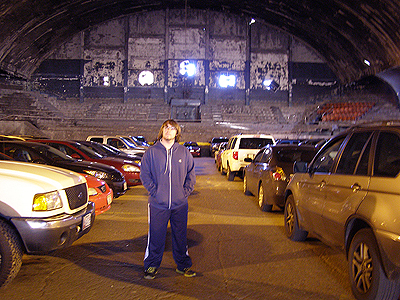
Here, we look south, where you can see more old stands, railings, and an entire section of corner seats that are still intact. The paint is peeling off of the walls but is still the original paint job.
Bryan is standing in the exact location of the original stage, which, when The Beatles were there, was actually an elevated boxing ring with the ropes removed.
This photo gives a very good view of the curved roof of the building.
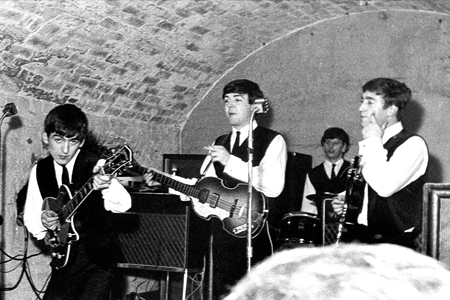
Compare the above photo to this one of The Beatles at The Cavern. Surely, when playing the concert in the Washington Coliseum, they HAD to be thinking that the curved roof looked awfully familiar. It likely felt like they were in a huge version of The Cavern and made them feel more at home.
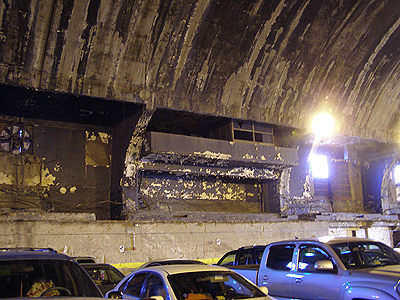
A view of the west side, showing the old Press Box. This is undoubtedly where the reporters sat for the hockey and basketball games. You can still see the ladder used to get up there. This would have been one of the best seats in the house for the Beatles concert, and you have to wonder just who was sitting up there that night.
The little enclosed "booth" area to the right of the Press Box was probably where the radio announcers sat and broadcasted the games. Given the size and acoustics of the building, this sort of enclosed area would have been necessary to keep some of the crowd noise from reaching the mikes.
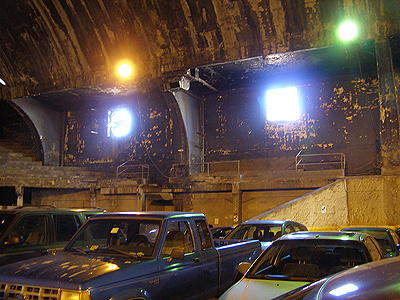
This shot is just to the left of the one above. The big triangular concrete "wall" you see is undoubtably a structural support bracing that side of the building. It was also once used to support an inclined lower seating area. Apparently the floor of this area and those seats were removed. But the wall remains intact to strengthen the building.
Here you can see railings along the top with openings. Also a doorway on the ground level. I think that people must have entered and walked along corridors that ran under the lower seats, into this doorway, up stairs which are probably still back there, then through he openings and down to their seats. At the time we were in there, we could have easily walked in there and taken a look. But we were hesitant to do too much exploring, fearing that the two parking guys may see us, be concerned for our safety, and ask us to leave.
I hope to again explore this building and next time, check out a few of those places we avoided this first time around.
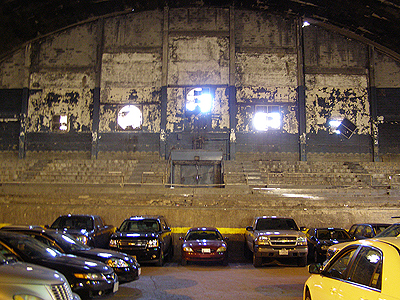
A closer view of the south end. When looking at the building from the outside, you can see that there is a smaller, shorter part that extends outward from the main building on this side. I think that those doors open, go down stairs, and into this part of the building which was connected to the front entrance and used by people going to / from their seats.
People likely entered the building through the main doors on the east side (which we'll see in a bit), then made their way around the perimiter of the building. People sitting on that end of the building came in through those doors. Those sitting on the west side probably went a bit father then up the corridor described above. Damn! It would be fascinating to go through those doors and take a look. I wonder if they are unlocked? Maybe next time we can find out.
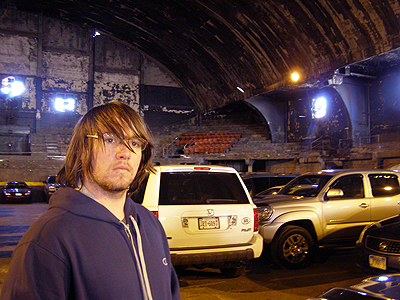
Bryan plays guitar and has aspirations of someday becoming a rock star. So while there we took this photo of him standing in the exact center of the building, where The Beatles and Bob Dylan once stood, with those old historic seats behind him for possible use on a future CD cover.
If he ever makes it this far and puts out that album, remember, you saw the photo here first!
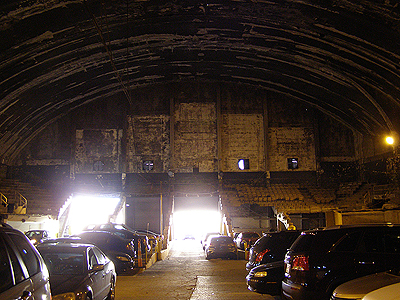
Here, we look back at the entrance through which we came. There are three entrances and, as you can see in the exterior photo, above, the middle one is closed.
If I had to guess, I'd say one of these has always been there. This would have been needed for loading audio / stage equipment in / out and for the entrance / exit of the Zamboni for the hockey games. We can see from the above photo of the south end that there's no way they could have done this at that end. Therefore, this must be the place.
I'd guess that the one in the middle of the photo, above, is the original. The two on the left (one closed) were probably added years later when the building was converted into a trash transfer station. If we could see photos from "back then" I'd bet that we'd see seats on either side of the center opening going all the way down to the floor.
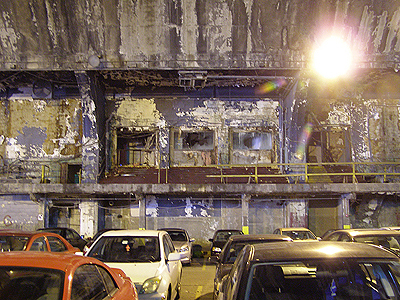
This is the center of the East Side. This is directly across from the Press Box in the photo, above.
Here we appear to have an additional press area or perhaps an early version of a "luxury box" where privileged guests could enjoy the games / shows from behind windows or from a few choice seats directly below them. Maybe this was where the owners of the arena and the sports teams sat with their guests?
That would make sense, as this area is directly behind the main entrance corridor to the building (shown in the pictures below), and the area just behind it is probably where the offices were located.
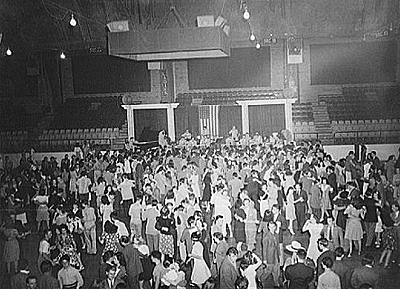
|
Same Side, Back In The Day...
|
Now, compare that view to this photo of a 1942 dance featuring Woody Herman and His Orchestra.
The rows of seats above the stage are undoubtedly the same ones we see in the 2013 photo above. Which means that the "luxury box" area and windows must have been added later. They have to be the same ones because of their location with respect to the two curved roof support pillars on either side—which are clearly visible in both photos.
But if that's the case, that means that the floor underneath them (which is holding up the yellow railings in the 2013 shot) wasn't the edge it is now, but rather, seats continued to come down for about seven rows in front of it. Indeed, in the 1942 photo you can see four rows of "dark" seats which come down, go in front of the pillars, and continue on down to the level of the stage. Which, in the 2013 photo, is now the floor.
So this begs another question. In the 1942 photo, the dancers are obviously about four feet below the stage. So, was the original coliseum deeper than it is now? Was it filled in prior to being covered with the concrete we see in 2013? Look at the North End photo, above. The "steps" on the concrete supports where the rows of seats once were come down to about this same level, flatten out for about four feet, then drop as if that was the end of the seating area but for some events, chairs were placed on the floor, below.
And if that is indeed the case, then that means that Bryan was in the EXACT spot where The Beatles and Dylan were in the "South End" photo, above—not four feet below as assumed above.
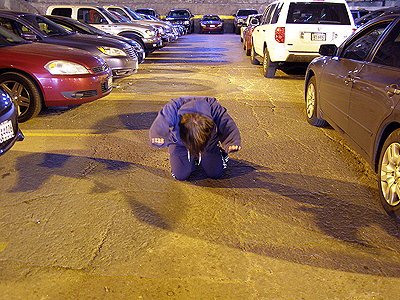
And here he is, in what is probably the exact spot of Ringo's bass drum, paying tribute. COOL!
I should now stop a moment and say a few words about the feeling you have standing inside of this place. You can almost hear The Beatles music still in the air. Looking around at the ceiling and the walls, you think "they absorbed the actual sound waves from the concert that night." You are absolutely overcome with awe, knowing what once happened in this exact spot. Then you realize that 90% of the people who now live in or frequent the area probably have no idea that any of this happened. Alas.
Anyway. After spending about half an hour inside, we decided not to push our luck. Also we knew we had to be in Union Station in about an hour to pick up our parade tickets. So we said goodbye to the inside of this holy shrine of rock & roll...
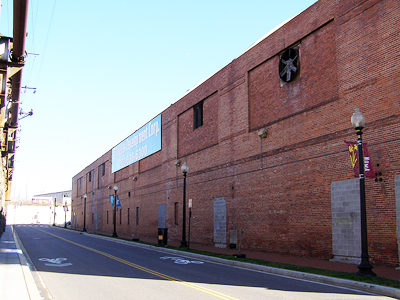
...and headed OUTSIDE. Coming out of the north end garage doors, we turned to our left and started walking down Delaware Avenue. Here is a shot we took down from the south end of the building, looking back up Delaware Avenue.
My biggest question about this side of the building is, were there once doors in the spots where we now see the cinderblocks? Possibly so. While I wouldn't expect people to be able to get in this way, it would make perfect sense that there would be many doors that opened one way to allow people to quickly exit the building after a show or in case of an emergency.
Might The Beatles have come in / left via this side of the building? In the concert footage we see them enter from the side, through a path that went through the middle of the people in the middle floor seats, and up about four steps to the stage. They probably entered from the other side, the side where we assume the office was. But they could have been brought down Delaware to this back side of the building to avoid the crowd that would have expected them to come in the front way. Or perhaps that's where they left the building?
The big blue "Douglas Development" sign is in the center of the building. The stage would have been located just behind here. If they came off of the stage and were routed out of the west side of the building, it would most likely have been the doorway just to the left of the sign.
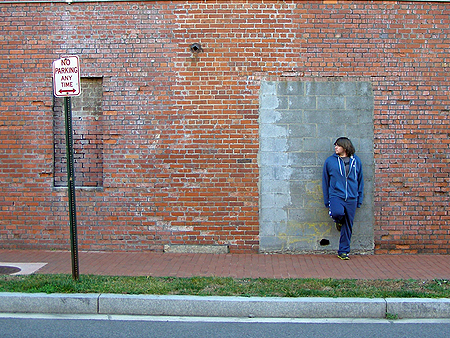
|
West Side - Middle "Doorway"...
|
Here's a close-up of that doorway (well, where it was, anyway). We decided that if the front of his CD would have the photo of him standing where the stage was, the back side would use this one of him standing by the doorway.
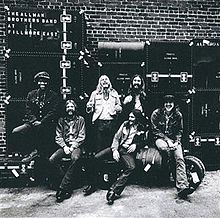 
It kind of reminds me of the covers of the Allman Brothers at Fillmore East and the John Lennon Rock & Roll album. What do you think?
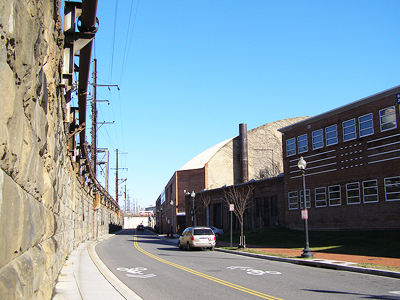
|
Same View, Father Away...
|
At the time we shot these photos, we weren't really sure where the original entrance was. The existing photos of it have been cropped and it's difficult to tell just where it is. So we decided that we were going to walk all the way around the building and we'd eventually find it.
This wasn't easy because of the adjacent buildings just south of it. But we're glad we did, as this afforded us the opportunity to shoot this photo, from the corner of Delaware and L Street. We then turned the corner and headed east on L Street.
There is a small side road that runs from L Street back to the SE corner of the Coliseum. We started to walk up this street but it was very busy, a couple of guys were loading stuff into a truck, and at the time we thought "maybe we shouldn't be here." Apparently there's a coffee shop, a medical "urgent care" facility and a few other local businesses on this street (which, according to Google Maps, isn't even named). So maybe we will try this the next time.
So we continued up L Street to 3rd and turned left (north) and about half a block up the street, there they were! The Entrance and the part I'll call "The East Side Alcove."
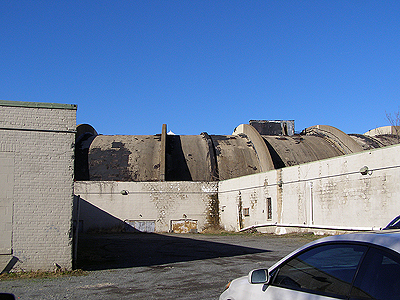
The "East Side Alcove" is a little area between the "Entrance" arm of the Coliseum and a small building next door.
As we approached this area, it seemed very familiar. As Yogi would say, it was "deja vu all over again." I shot this picture, but wondering where I'd seen this before hounded me for the rest of the day. Until I returned to the hotel room, did an online image search, and found...
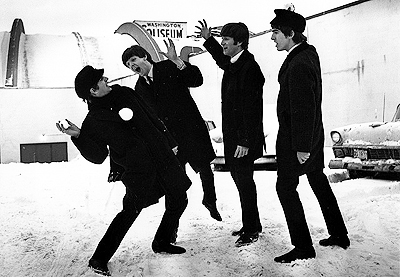
THIS. A photo I'd seen in the past, in books and various Beatles documentaries. Then it was "DAMN! WE WERE THERE TODAY!"
I'm a big believer in math and science. In "Three Dimensional" space, you have width (the X-Axis), depth (the Y-Axis) and height (the Z-Axis). The Fourth Dimension is TIME. That we occupied the same space as ALL FOUR BEATLES, TOGETHER is nothing short of COSMIC.
There's also a FIFTH DIMENSION. That's Marilyn McCoo and Bill Davis, Jr.

The "Alcove" from the other side. For this shot, we were standing in front of and just to the left of the main entrance to the Coliseum.
That building that juts out on the left side of the parking lot used to house one of the studios of WWDC. You can see this in the photo, below. WWDC apparently located this studio here so they could broadcast live from the coliseum.
There's a very famous radio interview of the Beatles, done on February 11, 1964, by Carroll James. It aired on WWDC and is said to have been done at the Washington Coliseum. Read more about that interview, see a photo, and read the transcript of the interview
here . Check out the photo. They're obviously dressed in the same clothes as in the snow photo, above. My guess is that the snow shot was taken in the parking lot after the interview, which had to have been done earlier in the day, otherwise there would have been a big crowd outside. For this reason it was likely recorded and played back later.
The article referenced above says that the Beatles did the interview "in a remote broadcast trailer" but I'm certain that it was actually done in THIS BUILDING.
And finally....
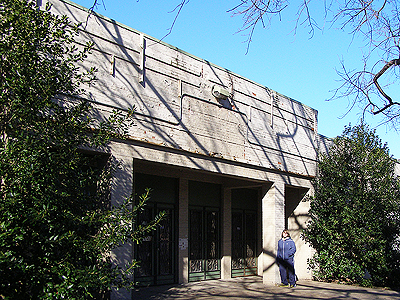
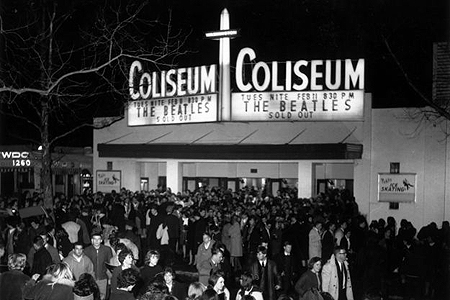
THE ENTRANCE! Compare / contrast the two photos of it from now / then, above.
I recognized the doorway and the two brick columns as soon as I saw them. Gone are the small overhanging roof eave, the marquee, the "Coliseum" sign and the "Washington Monument" in the middle, but you can tell it's the same place.
This was another of those "deja vu" moments. I've seen the 1964 photo, above, hundreds of times. But it's still just awesome to stand there thinking "WOW, the things that once happened in THIS EXACT SPACE.
So now, having been there, the first thing I notice is that the kids lined up to attend the Beatles concert were mostly standing out in the middle of 3rd Street. I assume that traffic was blocked this particular night.
We know that it was cold and there was snow on the ground, but you can't really tell from looking at the 1964 photo.
The marquee says "SOLD OUT" and it was. I've read that the official figure was 8,042 people in attendance. Not a big number by today's huge arena-rock standards. But for this building, THAT'S A LOT.
And there's the WWDC 1260 sign on the building across "The Alcove". Obviously the original building was bricked in at some point. The windows and the covered sidewalk in front of it are no longer there. But it has to be the same building. It's in the exact same spot.
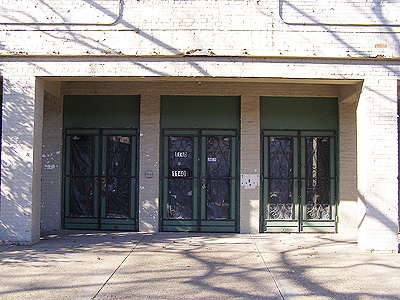
And here's a straight-on, closeup of the doorway.
From the 1964 photo, above, it appears that once these doors were opened, the fans then went inside and had their tickets torn in the building. I don't see any ticket takers out front.
These days, there are wood panels behind the glass in the doors. This really made me kind of mad. I was SO hoping to look inside. But I don't blame the current owners for putting them there for security concerns.
WOW. Just think of all the people who went through these doors over the years, and all the games / shows / events they saw when they did.
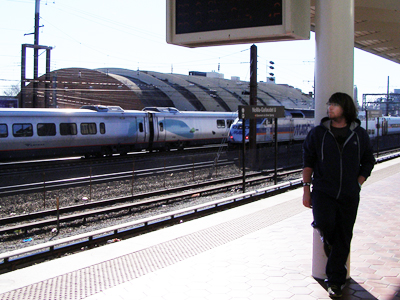
|
View From The Metro Station...
|
And now it's time to go.
This is a view of the building, across all of the railroad tracks, taken at the NoMa / Gallaudet Metro Station which is one stop above Union Station which is about a half mile from here (to the south, in the photo to the right).
Union Station is where The Beatles stopped when they arrived in Washington, DC. They were greeted by a fairly large mob of fans there. You can hear the story / see some footage of this on "The Beatles - The First U.S. Visit" (link to buy one is on Page 1).
We had a fun time visiting the place and telling this story. By the way, this bottom photo will probably go on the inner gatefold of the CD.
P.W.G. & B.W.G.
May, 2013
|

